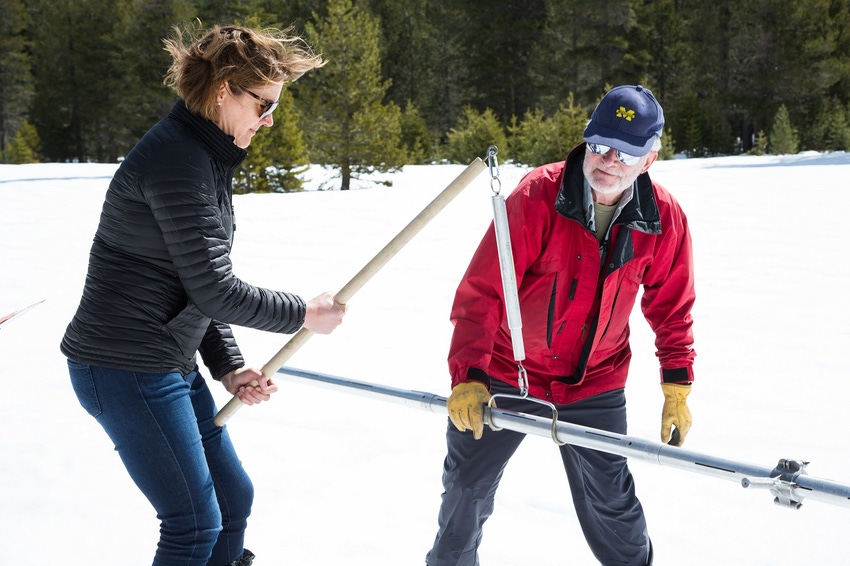
A wet March improved California’s snowpack, but it’s still only about half its normal depth for this time of year at a state Department of Water Resources mountain survey station east of Sacramento.
The agency’s monthly manual snow survey on April 2 found a snow-water equivalent of 12.4 inches, or 49 percent of average for this time of year as recorded since 1964. The snow-water equivalent is the amount of water contained within the snowpack.
The readings conducted by state snow surveys chief Frank Gehrke followed significant storms in March that dumped several feet of snow in the Sierra Nevada and boosted the water content at Phillips Station near Lake Tahoe from just 23 percent of the March 1 average.
However, the average snowpack statewide was only 52 percent of normal as of April 2, according to the DWR’s California Data Exchange Center.
“Clearly, while we had a good March, it was not adequate to get us up to a really good outlook with respect to water supply,” Gehrke said to reporters who gathered at Phillips to watch the monthly ritual. He noted that the last month brought “a respectable increase,” as the snow-water content had gained 11 inches since Feb. 28. “It was a good March, but certainly not a great March,” he said.
Snowpack Value
Snowpack plays a large role in determining State Water Project and federal Central Valley Project water allocations in a given year, as the snowpack normally provides about one-third of the water for California’s farms and communities as it melts in the spring and summer and fills reservoirs and rivers, the DWR explains.
Thanks largely to the wet winter of 2016-17, most major reservoirs in the state are still above their normal levels for this time of year. For instance, Shasta Lake, the centerpiece of the Central Valley Project, was at 86 percent of capacity and 105 percent of its average for April 1, according to the DWR.
One notable exception is Lake Oroville, the State Water Project’s chief reservoir, which is at 60 percent of capacity after the lake was drawn down this winter to accommodate the reconstruction of the Oroville Dam.
“We’re living off our water savings from last year, so we’ve got to continue to be prudent in our water usage,” Gehrke says.
While storms in March brought some new snow to the Sierra, they pushed many areas in the Central Valley above their average rainfall totals for the month. For example, Sacramento recorded 5.14 inches of rain in March, well above its normal 2.75 inches, according to the National Weather Service.
A warm storm this weekend is expected to bring another inch or two of rain to the valley and 3 to 6 inches of rain in the mountains, the weather service reports.
The results of the latest snow survey still underscore the need for “widespread careful and wise use of our water supplies,” asserts Karla Nemeth, the DWR’s director.
“We’ve got one word for all Californians and that’s conserve,” she told reporters. “It is a new way of life.”
PHOTO CAPTION
Courtesy of the California Department of Water Resources
State Department of Water Resources director Karla Nemeth (left) helps snow surveys chief Frank Gehrke take readings during a manual snow survey April 2 at Phillips Station in the Sierra Nevada about 90 miles east of Sacramento. California’s snowpack is improved from a month ago but still below normal.
About the Author(s)
You May Also Like






